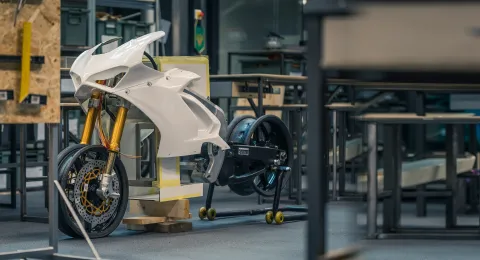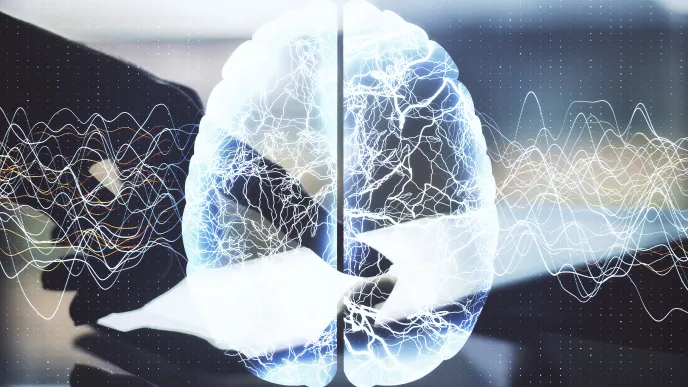Students on LUT University's Lappeenranta campus have been developing a new electric motorcycle concept at the J. Hyneman Center (JHC) for rapid prototyping for roughly a year. Students designed the bike's body and started building it from aluminium, making some of the parts themselves and purchasing others. They are aiming to set up the batteries and steering mechanics by the end of the year. Testing will start next year.
Associate Professor Markku Ikävalko says that the main goal is to make the bike as fast and light-weight as possible to make it competitive in racing. The bike has been named JHC Ukkonen after the Finnish word for thunder.
"The bike will receive its final coat of paint just before its official reveal. In its current form with all of the parts put together, it already looks like a motorcycle," Ikävalko grins.
The electric motorbike has no gearbox, but it has a highly adjustable throttle grip. The bike accelerates from zero to a hundred kilometres an hour in a couple of seconds.
"Eight battery packs in an aluminium casing feed power to the motor. The batteries are designed to last for roughly five laps in a race. The weight is comparable to that of a superbike – about 190 kilograms," says LUT's Development Manager Marko Kasurinen.

Swarm intelligence building the bike
In addition to building an electric motorcycle, LUT has been building a new business course entitled Case Course on International Motorsport, where multinational student teams use business tools to study motorsports phenomena. The national motorsports federations AKK-Motorsport and Suomen Moottoriliitto are collaborating on the course.
"Student groups learn about sponsoring, managing, and business models. We seem to be the first university in Finland that is studying motorsports on its courses," Markku Ikävalko assesses.
The bike is being designed on a computer, partly utilising rapid manufacturing methods such as 3D printing. For example, LUT's mechanical and electrical engineering students have been involved in the development process. Course assignments have included designing the rear wheel suspension and turning the movement of the throttle grip into a forward moving force. Students from the Master's Programme in Industrial Design Engineering have put their expertise to use in designing the bodywork and appearance of the bike.
The J. Hyneman Center is utilising swarm intelligence – not everyone needs to know everything. Marko Kasurinen explains that the project somewhat differs from basic engineering because it is experimental and advances rapidly.
"The university is building a modern electric motorcycle. LUT has access to software that has enabled virtual stress tests on the frame. Carbon fibre technology can be utilised in the future to build the bodywork and frame," Kasurinen explains.
Is a well-rounded team the key to success in competitions?
The electric motorcycle being built at LUT University is not directly suitable for commercialisation into private use. On the race track, JHC Ukkonen's 150 kilowatts and maximum speed of 250 kilometres per hour will be put to the test in the International Road Racing Championship race in Imatra in July 2021. LUT will need a professional to ride the bike in the race.
"Our partner university from Twente in the Netherlands has already entered two electric motorcycles into the race, and three teams are coming from the UK. We're aiming to compete alongside them," says Markku Ikävalko.
LUT's versatile team is a key factor in how the bike will perform in the race. LUT University's motorcycle is a work in progress, and new students bring new know-how to the mix.
Marko Kasurinen reveals the secret of the J. Hyneman Center:
"We're allowed to fail, teachers are also here to learn, and Jamie Hyneman is genuinely present in prototype projects."
JHC Ukkonen – Electric Superbike
• Maximum capacity 150kW, torque 350Nm
• Battery capacity 13 kWh, 1440 battery cells
• Annual budget 50 000 euros
• Built at LUT University
• Incorporated into technology and business courses at LUT
• First race: Three flashes in Imatra, Finland, in July 2021.
• LUT is seeking like-minded sponsors: curious and innovative
• Website of the superbike: https://jhynemancenter.com/ukkonen/
Further information:

Marko Kasurinen









